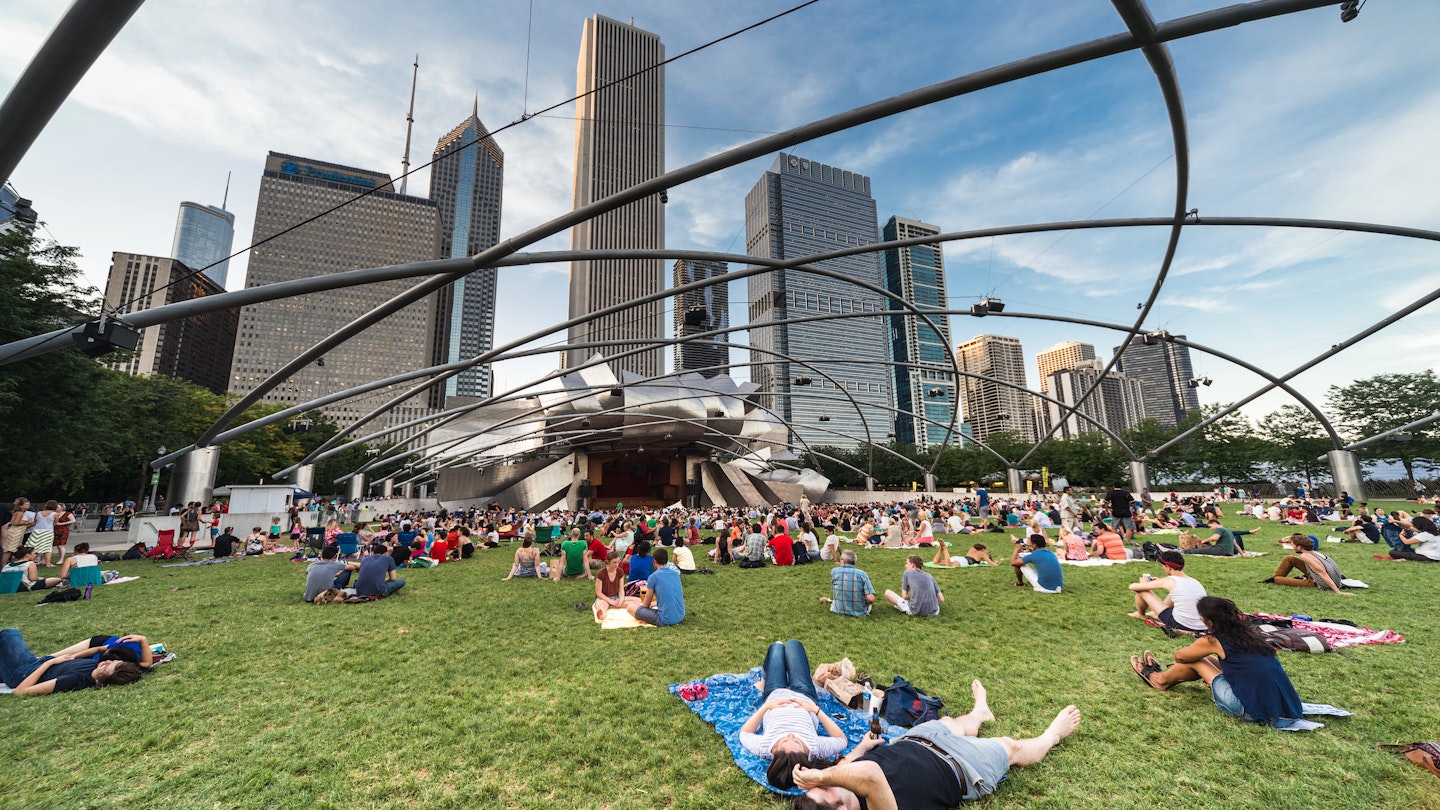Best Times to Visit Chicago
Famous for its icy winters, steamy summers, and busy festival calendar, Chicago has something going on in every season. The Windy City changes mood with each passing month; however, some things remain constant. The city’s lively nightlife, cultured museums, and animated neighborhoods warrant a visit at any time of year.
Events such as Lollapalooza and the Chicago Blues Festival have put the city on the national festival map. However, numerous events fill every month of the year, from championship sports to special museum openings, cultural fairs, and community festivals.
Chicago shines in the summertime—with hot, humid days complemented by plenty of lakeshore beaches and parks where you can catch a refreshing breeze. The calmer spring and autumn possess their own charm, while winter brings lower tourist numbers and ample snow and ice along the lakefront, adding to the holiday magic.
November to April: The Best Time to Score Bargain Rates
Although Chicago’s winter temperatures hover around freezing, the bitter wind from the lake can significantly drop temperatures. The stunning sights of trees and bushes along the lakeshore becoming encrusted in ice provide an enchanting backdrop for the season.
While chilly conditions may deter many tourists, they create an abundance of bargains—particularly for accommodation. Travelers can find enticing deals at hotels across the city throughout the winter months, making dining reservations at top restaurants easier to secure.
Late November and December usher in the holiday season, with festive light shows illuminating locations such as Lincoln Park Zoo and many outdoor ice-skating rinks. The icy scenes along the lakeshore lend an extra touch of Chicago magic. Moreover, museums are less crowded during the winter, making it an ideal time to explore the Art Institute of Chicago, one of the world’s oldest and largest art museums.
Michigan Avenue bustles with holiday shoppers, and downtown glimmers with a million twinkling lights. Winter is the perfect time to indulge in some Chicago deep-dish pizza and form your own opinion on the city’s legendary pizza rivalry with New York.
January is typically Chicago’s coldest month, with temperatures plunging as low as 22°F. This month also sees the most snowfall, averaging around 10 inches. Therefore, it is wise to plan indoor activities that let you experience the city’s dining and nightlife.
February to April: Fun Events Await
February remains deeply entrenched in winter; nevertheless, several events can keep you engaged. The Chinese New Year Parade, Cupid’s Undie Run, and Chicago Theatre Week offer exciting diversions. For spectacular views of the frozen landscape, head to the observation deck atop the former John Hancock Center.
By March, Chicagoans eagerly anticipate the arrival of spring. Windy City residents count down the days during what is often the grayest month when temperatures struggle to exceed 37°F. Fun events such as the famous St. Patrick’s Day parade provide excitement, as the Chicago River undergoes a colorful transformation with biodegradable dye.
As April springs forth, weather can be unpredictable, leading to sunny skies, rain, or even snow—sometimes all in one day. Sports enthusiasts flock to Wrigley Field and Guaranteed Rate Field for the commencement of baseball season.
May and September to October: Enjoy Culture Without the Crowds
Chicago features two shoulder seasons—late spring and early fall—when the city transitions between winter and warmer weather. Both seasons are excellent for visiting if you plan to explore the city’s impressive museums.
During these months, temperatures generally range from 50°F to 70°F, and the overall mood in the city is buoyant, although rain can be expected. Budget travelers will benefit from favorable airfares and hotel prices, but it’s crucial to watch the calendar for potential price spikes tied to major sporting events and festivals.
May heralds the arrival of warming weather, prompting many to flock to Chicago’s parks, lakefront trails, and beer gardens. Beaches open on Memorial Day weekend, with an uptick in travelers arriving in the city. This is also when community-focused festivals such as Mole de Mayo and Sueños Chicago take place.
As the school year begins in September, the peak visitor season gradually winds down; however, the cultural calendar remains vibrant. Events such as the Chicago Jazz Festival and Riot Fest continue to light up the city.
October sees further temperature drops, averaging around 53°F. The close of the baseball season is compensated by the excitement of basketball and hockey games. Chicago Bears games and the energy of tailgate parties keep the spirit of the city alive.
June to August: Festivals, Beaches, and Baseball
Warm weather and a jam-packed festival calendar make summer the prime time for visiting Chicago. With schools out, families flock to the city’s beaches for sun-soaked fun, and museums buzz with activity. It’s important to plan in advance for hotel accommodations, as prices peak during this period.
In June, schools let out, and the festival season breaks into full swing with temperatures climbing towards 80°F. Expect occasional rain as the city celebrates pride and colorful street festivities.
July is particularly lively, with numerous festivals, including the renowned Lollapalooza, taking center stage. Millennium Park hosts nightly concerts, and events such as Taste of Chicago attract visitors from around the globe. Despite the hot and humid weather, the excitement overshadows any discomfort.
August typically brings warm and occasionally sizzling temperatures, alongside concerts, festivals, baseball games, and beach activities. Lodging prices remain high as tourists continue to fill the city. Enthusiastic Cubs fans crowd Wrigley Field and the surrounding rooftops.





